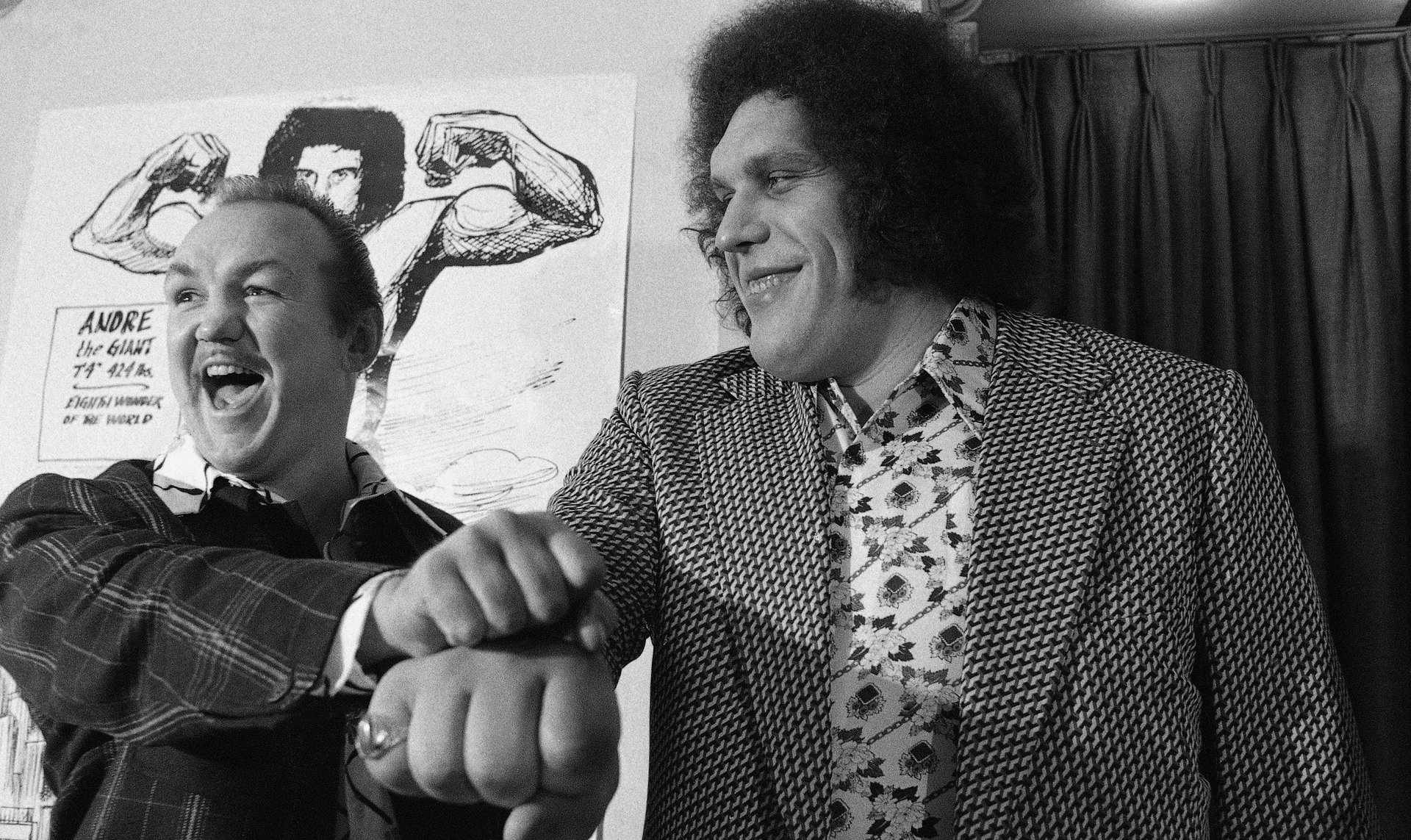HBO’s “Andre the Giant” documentary has a gigantic problem
Andre the Giant today may be best remembered from his role as Fezzik in The Princess Bride, or from his image on the ubiquitous Obey! sticker campaign created by artist Shepard Fairey.


Andre the Giant today may be best remembered from his role as Fezzik in The Princess Bride, or from his image on the ubiquitous Obey! sticker campaign created by artist Shepard Fairey.
But in the late 70s and 80s, Andre the Giant (born Andre Roussimoff) was a figure (literally) larger-than-life—a professional wrestler of such titanic proportions that even non-wrestling fans like myself couldn’t help but take notice. Billed at 7-foot-4 and nearing 500 pounds, he had hands the size of dinner plates and thighs like tree trunks. He was touted as the “Eighth Wonder of the World,” and in this case, professional wrestling’s hyperbole seemed accurate.
The awe and amazement generated by Roussimoff is on full display in Andre the Giant, a fascinating but seriously flawed HBO documentary that aired last night (April 11). The producers revel in Roussimoff’s enormity—and his enormous excesses. Much of the film’s first half is devoted to building up the legend of Andre the Giant, detailing his prowess in the ring (including man-handling the 6-foot-8 Big John Studd), his huge appetites for booze (fellow wrestler Ric Flair recounts the night Roussimoff drank 106 beers), and his legendary flatulence (really).
It’s only later that we learn Roussimoff’s colossal bulk and distinct facial features were a result of acromegaly, a hormone disorder, and that he spent his later years in considerable pain from spine and leg conditions. In interviews, only Cary Elwes, Roussimoff’s now strangely botoxed Princess Bride co-star, seems willing to connect Roussimoff’s voluminous drinking with his physical deterioration.
Roussimoff died in 1993 at age 46 in his native France of an apparent heart attack, and Andre the Giant treats that tragedy as an inevitability. That his end might have been hastened by the damage caused by the punishment he took during his nearly two decades in the ring—where he performed over 300 nights a year—is barely acknowledged.
World Wrestling Entertainment supremo Vince McMahon is interviewed, and—without any apparent embarrassment—credits himself with staving off Roussimoff’s decline by luring him out of retirement to fight budding superstar Hulk Hogan before 93,000 fans in a football stadium. McMahon claims that 1987 appearance gave Roussimoff a purpose in life, but the footage of him hobbling in the ring, barely able to stand, tells another story—that of a desperate man with no other options.
Andre the Giant is at its best explaining professional wrestling’s evolution from a regional, niche pursuit to a national entertainment behemoth, fueled by the rise of cable TV and McMahon’s ambition. And the film rightly places Roussimoff squarely in the center of that growth. But it ignores the sordid backstory that fueled that growth: Wrestlers were viewed by the industry as disposable commodities, and most performed without health benefits or hopes of a pension. Drug and alcohol abuse was common as wrestlers turned to narcotics to dull the pain of injuries—and performance enhancing drugs to bulk up for the cameras. An estimated 80% wresters were on steroids, Hogan once testified in court.
None of this is acknowledged in Andre the Giant, nor is McMahon’s role in overseeing an empire built on what former wrestler and Minnesota governor Jesse Ventura called “some of the most unfair working conditions in the country.” What impact those conditions had on Roussimoff’s health and early death goes unanswered.
The omissions are surprising, given that “Andre the Giant” was co-produced by Bill Simmons, whose “30 for 30 “series of documentaries at ESPN didn’t pull punches when confronting racism, corruption, and injustice elsewhere in sports.
Other details are glanced over, too. We discover Roussimoff had a daughter he rarely saw, and while she appears briefly on camera, we learn nothing about her mother, or any of Roussimoff’s other romantic interests. Even one of the most delightful details of his life—as an oversized teenager in rural France, Roussimoff was driven to school by a neighbor, legendary playwright Samuel Beckett—frustratingly fails to make it into the documentary (in an interview on Simmons’ podcast, the producers say they couldn’t verify the story). Neglecting to interview Fairey or discuss the Obey! campaign seems like another missed opportunity.
Ultimately, the documentary is more interested in telling the tale of Roussimoff’s turn from hero to villain (a “heel turn” in wrestling parlance) and his legendary bout with Hogan in Wrestlemania III, than in properly probing the circumstances of his death. Pro wrestling has been called a soap opera for men, built on spinning stories on stage. Like many of wrestling’s fans, Andre the Giant would rather celebrate its body slams than admit that the sport is a fake.
Update: This post has been updated to add the anecdote about Samuel Beckett couldn’t be verified.